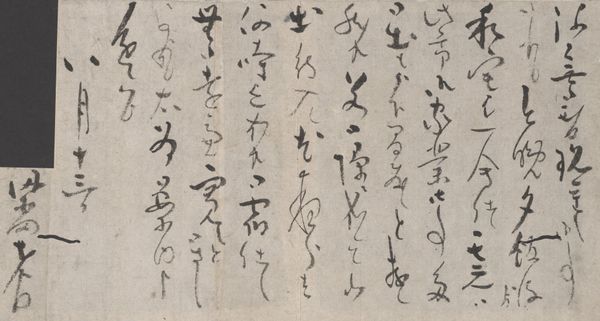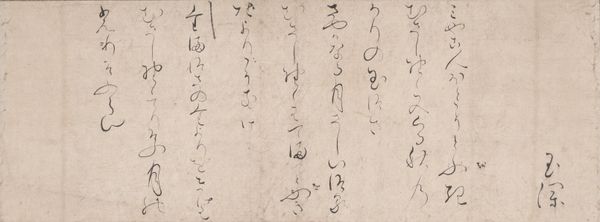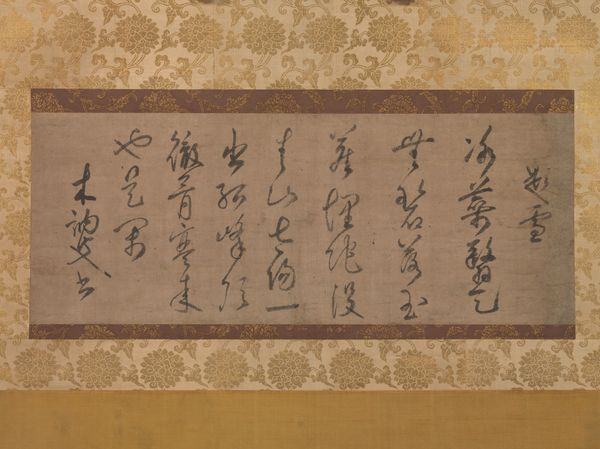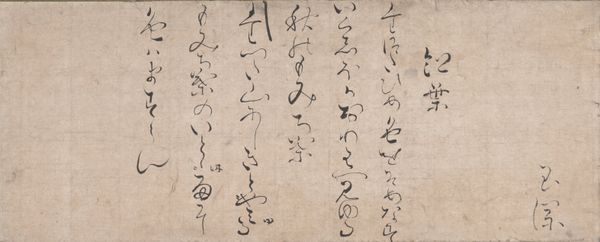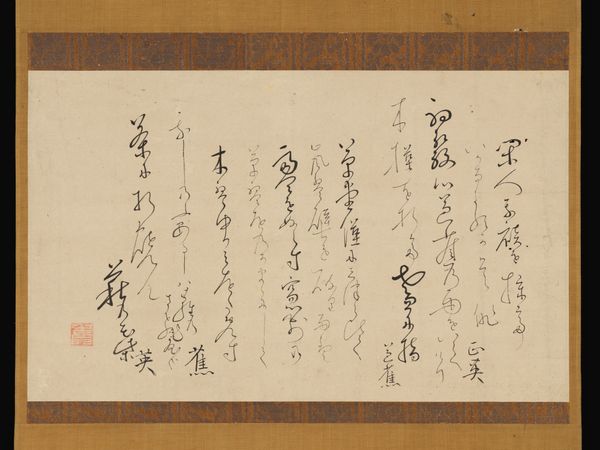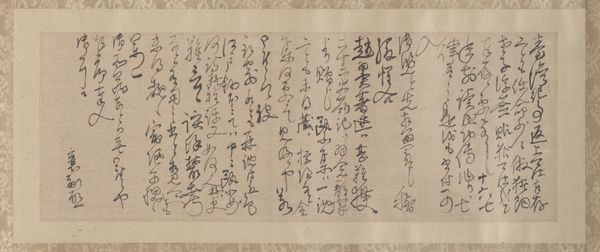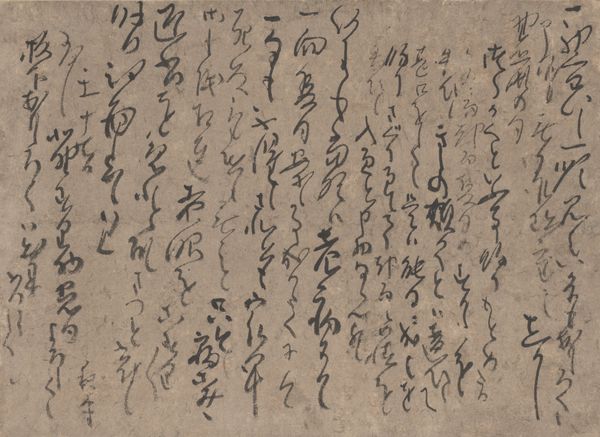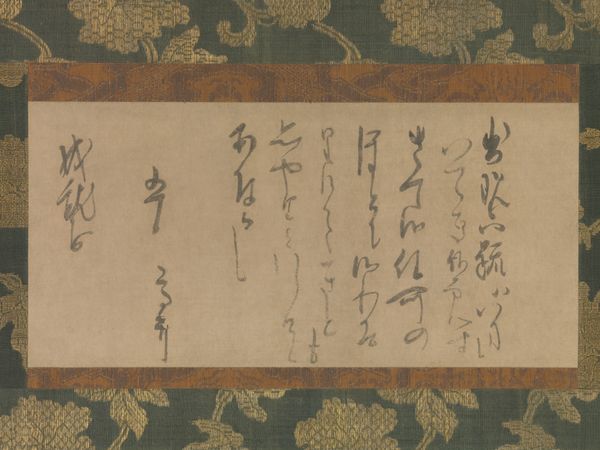
drawing, paper, ink
#
drawing
#
medieval
#
asian-art
#
paper
#
ink
#
calligraphy
Dimensions: Image: 11 × 19 in. (27.9 × 48.2 cm) Overall with mounting: 42 11/16 × 19 3/4 in. (108.4 × 50.2 cm) Overall with knobs: 42 11/16 × 22 in. (108.4 × 55.9 cm)
Copyright: Public Domain
This ‘Letter in Kana Character’ was brushed in ink on paper by Myōe Kōben in 13th century Japan. Myōe was a prominent Buddhist monk of the Kegon school during the Kamakura period, a time of significant social and religious change. Calligraphy in Japan, particularly by Buddhist monks, transcended mere writing. It was a profound spiritual practice. The fluid, expressive strokes, rendered in kana script—a simplified form of Chinese characters—reflect not just the content of the letter but also the artist’s state of mind, his spiritual discipline, and his engagement with Buddhist philosophy. Kana was associated with women and popular literature, so its use by a high-status monk was a conscious aesthetic choice. Understanding this work requires considering the role of Buddhist institutions in shaping artistic expression. Monks were often patrons and creators of art, using it as a means of teaching, devotion, and communication. By examining religious and social documents, and other artworks, we can appreciate how this letter reflects the complex interplay of spirituality, aesthetics, and institutional power in medieval Japan.
Comments
No comments
Be the first to comment and join the conversation on the ultimate creative platform.

